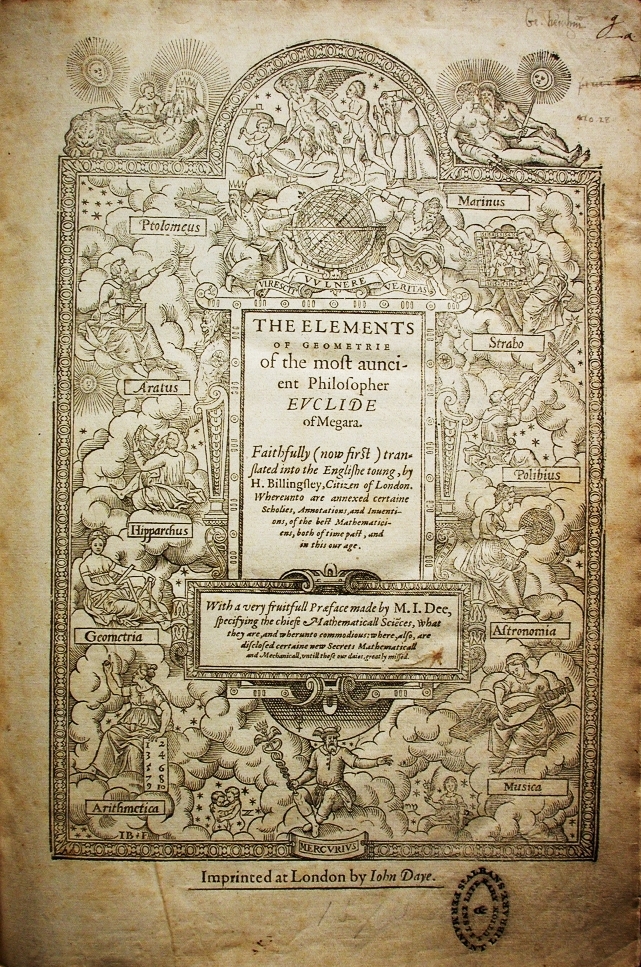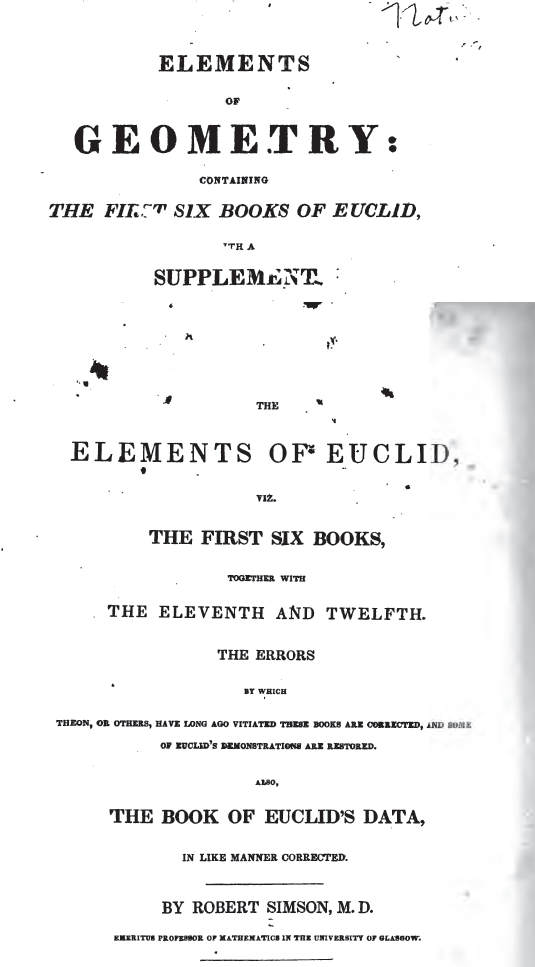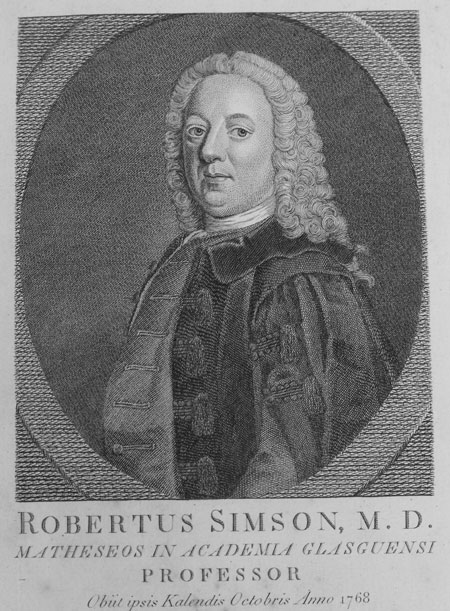Euclid's Elements - A 2,500 Year History
Bob Gardner
East Tennessee State University
Department of Mathematics and Statistics
Johnson City, TN 37614
The Elements in English
Heath specifically mentions dozens of other editions of the Elements. We now only mention some of those which appeared in English.

Sir Henry Billingsley published the first English
version of The Elements in London in 1570.
Image from:
http://www.math.ubc.ca/people/faculty/cass/Euclid/dee/dee.html
The first English translation of the Elements was by Sir Henry Billinsgley and appeared in London in 1570. It includes Books I-XV, along with a Book XVI by Candalla. The notes include all the most important from the Greek commentaries of Proclus and the others, down to commentaries of the time [Heath, pages 109 and 110].
Robert Simson published both a Latin and an English edition of The Elements in 1756.
The formal title was a bit lengthy: The Elements of Euclid, viz. the first six Books together with the eleventh and twelfth. In his Edition the Errors by which Theon or others have long ago vitiated these Books are corrected and some of Euclid's Demonstrations are restored. The book went through some thirty successive editions. Original copies are still widely available [Heath, page 111].
John Playfair played a minor role in the development of non-Euclidean geometry. He published an edition of The Elements in 1795 which contained the first six Books with two Books on solid geometry. He included the so-called "Playfair's Theorem" stating that given a line and a point not on that line, there is a unique line parallel to the given line passing through the point (all lying in the same plane).
Go to the next section: The Elements - Heiberg and Heath.
Last revised November 14, 2009.





